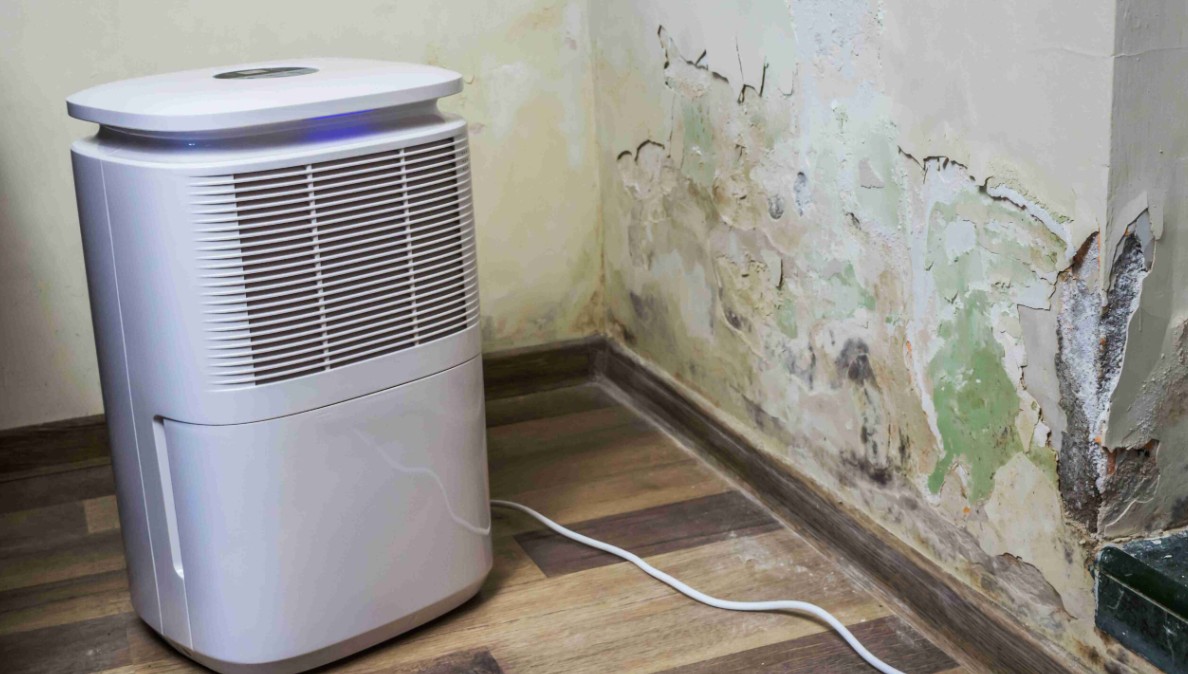Water damage in Westfield, ID is one of the most significant threats to homes and businesses. Whether caused by heavy rains, flooding, plumbing leaks, or high humidity, excess moisture can lead to severe structural damage and long-term health risks if not properly addressed.
One of the most critical steps in water mitigation is dehumidification, which helps remove excess moisture from the air and prevents mold growth. Without effective dehumidification, even minor water damage can turn into a costly and hazardous problem.
This blog explores the importance of dehumidification, how it plays a role in water mitigation, and how it helps prevent mold infestations.
Why Dehumidification Matters in Water Mitigation
After water damage occurs, many people focus on removing standing water—but the danger doesn’t stop there. Even after visible water is extracted, excess moisture lingers in walls, floors, furniture, and air. If left untreated, this moisture can cause mold growth, warping of wood, and deterioration of drywall.
1. Speeds Up Drying Time
Dehumidification is crucial in water mitigation because it accelerates the drying process. Instead of waiting days or weeks for materials to air dry, dehumidifiers pull moisture out of the environment quickly, reducing the risk of secondary damage.
2. Prevents Mold and Mildew Growth
Mold spores are naturally present in the air, but they thrive in damp environments. If humidity levels exceed 60%, mold can begin growing within 24 to 48 hours. Dehumidification keeps humidity in check, making it difficult for mold spores to multiply.
3. Protects Structural Integrity
Excess moisture can weaken the structural components of a building. Wood absorbs moisture, leading to warping, cracking, and rot. Drywall becomes soft and deteriorates. Metal components can rust. Dehumidification helps protect the integrity of walls, flooring, ceilings, and furniture.
4. Improves Indoor Air Quality
High humidity can lead to musty odors and encourage the growth of bacteria and allergens. Proper dehumidification improves indoor air quality, making the space safer and more comfortable.
How Dehumidification Works in Water Mitigation
Dehumidification involves removing moisture from the air and materials using specialized equipment. Here’s how professionals use dehumidification in the water mitigation process:
1. Assessing Moisture Levels
Experts begin by using moisture meters, thermal imaging cameras, and hygrometers to measure the extent of water damage and determine the moisture content in different materials.

2. Deploying Industrial-Grade Dehumidifiers
For significant water damage, high-capacity dehumidifiers are used. There are two main types:
- Refrigerant Dehumidifiers – These work similarly to air conditioners, cooling the air and removing excess moisture.
- Desiccant Dehumidifiers – These use chemical desiccants to absorb moisture and are particularly effective in extremely humid conditions.
3. Using Air Movers for Circulation
In addition to dehumidifiers, professionals use high-powered fans and air movers to increase air circulation and speed up the drying process.
4. Monitoring and Adjusting Equipment
Throughout the drying process, specialists continuously monitor moisture levels and adjust the equipment to ensure optimal drying conditions.
How Dehumidification Prevents Mold Growth
Mold thrives in damp environments, making it a major concern after water damage. Dehumidification plays a key role in mold prevention by eliminating the moisture mold needs to survive.
1. Reducing Indoor Humidity Below 50%
Mold spores become inactive when humidity levels drop below 50%. A properly sized dehumidifier helps maintain these levels, preventing mold from growing.
2. Drying Hard-to-Reach Areas
Even after standing water is removed, hidden moisture can linger in walls, insulation, under flooring, and inside cabinets. Dehumidification ensures that these hard-to-reach areas dry completely, stopping mold before it starts.
3. Eliminating Musty Odors
Mold and mildew produce distinct, musty odors. Dehumidification not only stops mold growth but also eliminates these unpleasant smells by keeping air dry and fresh.
4. Preventing Mold Allergies and Health Issues
Mold exposure can cause respiratory issues, allergies, and skin irritation. Keeping humidity under control with dehumidification reduces the risk of mold-related health problems.
Best Practices for Effective Dehumidification
If you’re dealing with water damage or high humidity in Westfield, ID, follow these best practices to ensure proper dehumidification:
1. Act Quickly
The sooner dehumidification begins, the lower the risk of mold growth and structural damage. Start drying within 24 hours of water exposure.
2. Use the Right Equipment
Standard home dehumidifiers are not powerful enough for major water damage. Use commercial-grade dehumidifiers for effective drying.
3. Keep Air Circulating
Combine dehumidification with air movers, fans, and ventilation to speed up the drying process.
4. Monitor Humidity Levels
Use a hygrometer to measure indoor humidity. Keep levels between 30-50% to prevent mold and mildew.
5. Inspect for Hidden Moisture
Even if a surface looks dry, check for trapped moisture behind walls, under floors, and inside cabinets.
When to Call a Professional for Dehumidification
While small water leaks can sometimes be handled with a household dehumidifier, major water damage requires professional mitigation. Here’s when you should call an expert:
- Water has soaked into walls, flooring, or ceilings
- There’s visible mold growth or a musty odor
- High humidity persists despite using a dehumidifier
- Flooding has affected a large area
- You’re unsure if hidden moisture remains
Professional water mitigation teams use advanced dehumidification techniques to ensure complete moisture removal, protecting your home or business from future problems.
Final Thoughts
Dehumidification is a crucial step in water mitigation in Westfield, ID, ensuring that excess moisture is completely removed after water damage. By reducing humidity levels, accelerating drying, and preventing mold growth, dehumidification helps protect both property and health.
If you live in Westfield, ID, staying proactive with water mitigation and dehumidification can save you from costly repairs and potential health hazards. Whether dealing with a flood, leak, or high indoor humidity, proper dehumidification is key to long-term damage prevention.
By taking quick action and using the right dehumidification methods, you can restore your home or business safely and effectively.
